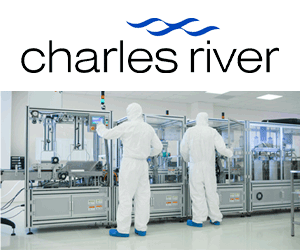In the pharmaceutical industry the downflow booth is one of the most widely recognised means to protect workers when handling dusty materials or undertaking activities that generate airborne particles. Keeping workers safe from dusts and fumes that can damage their health is a legal requirement under UK Health and Safety at Work, COSHH regulations across all industries. The user-friendly working environment offered by downflow booths (as an alternative to cumbersome PPE) combined with the high levels of protection they can afford, has led to the adoption of this clean air technology across chemical, food, healthcare and other industries.
However, Matt Wilby, Maintenance and Commissioning Engineer at process containment specialist, Hosokawa Micron says: “Downflow booths can only fully protect those working in them if they are regularly monitored, inspected and maintained to preserve their installation performance levels and comply with safety regulations.
Regular monitoring
Routine monitoring demonstrates the unit is performing to established, safe, commissioned standards. It provides invaluable historical data and enables prompt remedial action, if required, and forms an inclusive part of a scheduled programme designed to spot and handle deviations that may otherwise place operators at risk.
Daily visual checks such as checking for panel damage and failed lighting are a start point and can be done by the operator, who probably knows the unit better than anyone.
Further routine checks should be carried out by trained and competent technicians and include:
- Checking manometer readings are in the correct range
- Static pressure readings
- Checking there is no visible leakage
- Filter system check
Keeping records is crucial in demonstrating that the system performs as it was designed. Failures detected or deviations identified should be logged, reported and acted upon.
Training of your maintenance team will be offered by your downflow booth manufacturer at equipment handover. Training should be geared to the performance levels, activities undertaken within the booth, and tailored to accommodate specialist maintenance operations outside the company’s in-house capability and scope.

Measuring downward air velocity
Inspections
“Run to fail” is not an option with downflow booths and to maintain their performance a series of inspections or tests should be carried out by trained engineers at specified intervals determined at commissioning stage and detailed within the users/company’s service manual for each downflow unit.
Wilby explains: “Qualified external engineers may be required to carry out these test, many of which require local isolation and specialist equipment including the wearing of PPE as Operator Exposure Levels may be compromised.”
Smoke tests verify containment and that airflow in the booth is flowing in the right direction and is not compromised by the placement of equipment. It should also show that smoke remains within the safe work line and none flows into the outside area, which would indicate a risk to those in adjacent work zones and potential product contamination.
Where cleanroom or controlled area classification verification is required in accordance with BS EN ISO 14644-1:1999 airborne particle count testing is required. This is undertaken using light scattering instruments to determine clean zone cleanliness.
DOP (dispersed oil particulate) testing of high efficiency particulate air (HEPA) filters forms a part of the regulatory requirements and should be carried out by experts to ensure reliability. This test determines whether the filters are performing to the standards acceptable for your operations. The test provides assurances for all parts of the filter including the seals and the housing. The statutory requirement for testing intervals is 14 months with the test carried out in accordance with BS EN ISO 14644-3:2005 or PD 6609:2007 by test engineers capable of identifying and resolving leakage problems.

Fliter replacement
Service and maintenance
“A planned maintenance programme prevents equipment failure and production interruption whilst keeping the downflow booth safe to use. We recommend companies look at packages from OEMs which offer scheduled visits to undertake a full range of checks and tests to industry standards as well as full IQ/OQ recertification of your system. Compliance documentation provision is also an advisable option.
Service intervals should be recommended by manufacturers, take into account HSE guidelines as well as how your downflow booth is used and how much product passes through it, and help determine the framework for a preventative and predictive maintenance schedule to meet your H&S obligations.
For example a downflow booth operating on a 24/7, three shift dispensing line will require more frequent servicing than a booth that handles a few sample tests per week. Any remedial work deemed necessary would be carried out at this point by the service provider – including filter replacement, says Wilby.
Spares, replacement parts, upgrades
Manufacturers are able to help manage stocks of spare parts to ensure minimal downtime and optimum performance of the downflow booth. “At Hosokawa we offer a range of upgrades to lighting, containment screens, cooling packages etc., that can extend the operational life of your booth as your requirements change.”
Wilby concludes: “Whist alarms and reports highlighting abnormal operations will be provided by your booth management system, the responsibility for compliance with regular Health and Safety audits remains with the company operating the booth.
“If something is not working as it should do not wait for a scheduled service call or H&S audit. Contact your maintenance service provider immediately. Never let the problem escalate.




